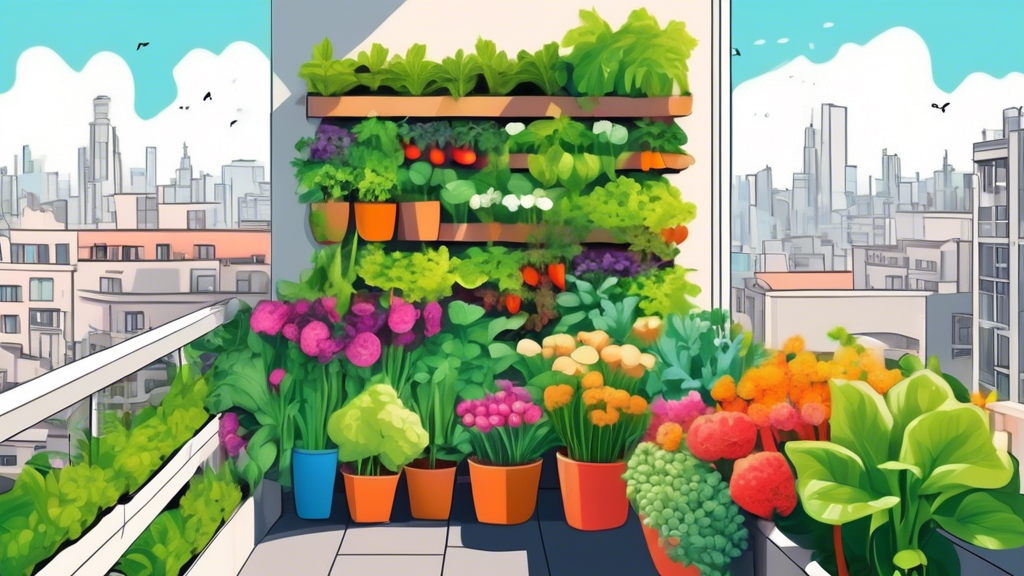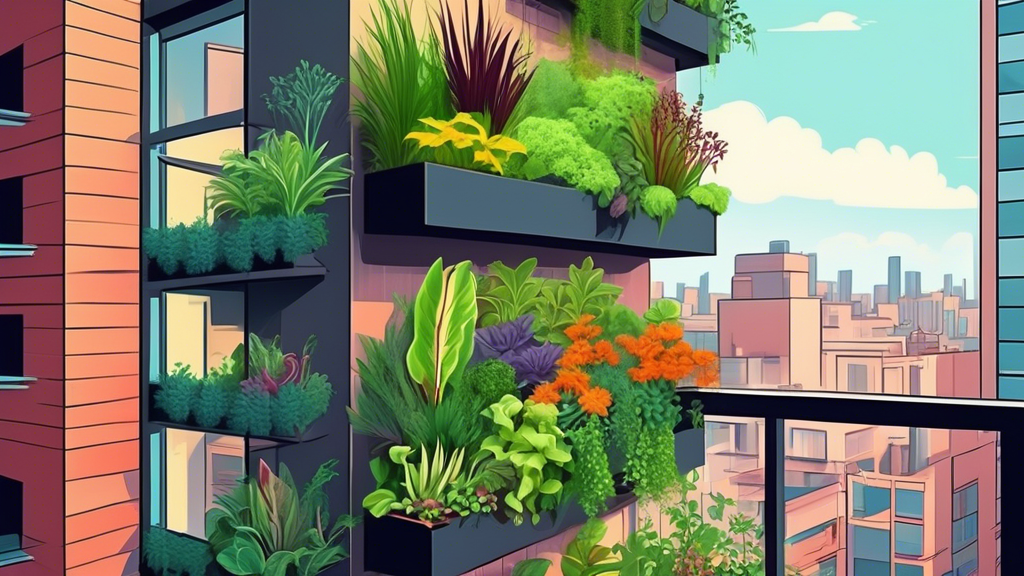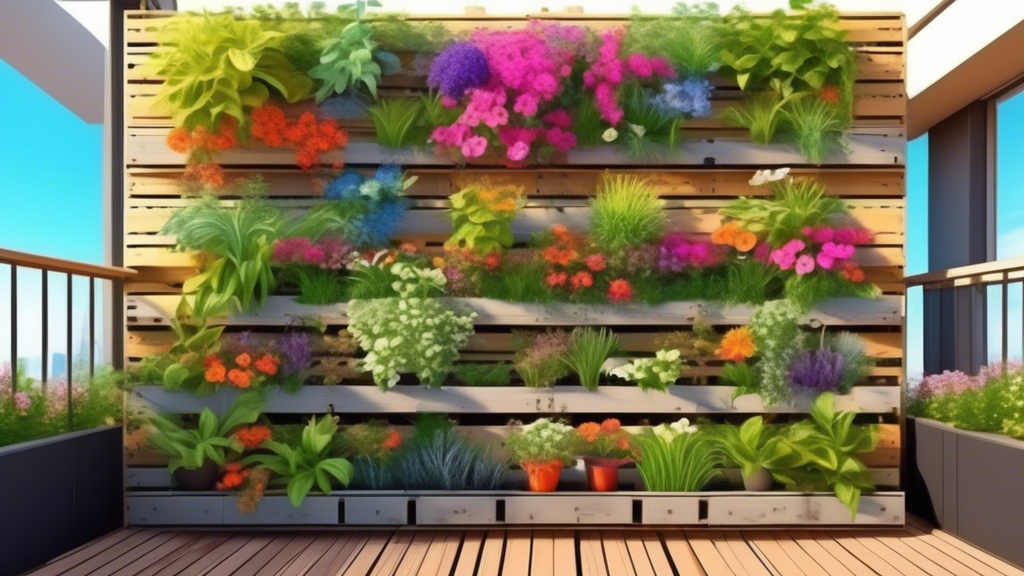
Why Start an Urban Garden? The Benefits Beyond the Harvest
Urban gardening is more than a hobby; it’s a lifestyle shift that brings nature into the heart of the city. While the joy of harvesting your own food is undeniable, the benefits extend far beyond your plate.
Fresh, Hyper-Local Food at Your Fingertips
Imagine stepping onto your balcony to snip fresh basil for your pasta or harvesting a sun-warmed tomato for your salad. Urban gardening reduces your reliance on store-bought produce, which can travel thousands of miles, losing nutrients along the way. You have complete control, ensuring your food is organic and free from harmful pesticides.
Mental Wellness and a Connection to Nature
In the concrete jungle, a patch of green can be a sanctuary. The act of nurturing plants is a proven stress-reliever, offering a mindful escape from the hustle of city life. It provides a tangible connection to the natural world, grounding you and fostering a sense of peace and accomplishment.
Transforming Your Space (and the Environment)
An urban garden beautifies your living area, turning a bland balcony or windowsill into a vibrant, living space. On a larger scale, plants improve air quality by absorbing carbon dioxide and releasing oxygen. They also help reduce the “urban heat island” effect, where city areas become significantly warmer than their rural surroundings.
Overcoming Common Urban Gardening Challenges
Every urban gardener faces hurdles, but with a bit of creativity, they are all surmountable.
“I Don’t Have a Yard!” – Gardening Without Ground
Lack of traditional garden space is the most common concern. The solution lies in looking up and around.
- Balconies & Rooftops: Perfect for container gardens, raised beds, and vertical planters.
- Windowsills: An ideal spot for a compact herb garden or microgreens.
- Walls: Utilize vertical space with hanging pockets, wall-mounted planters, or trellises for climbing plants.
“I Have No Time!” – Low-Maintenance Systems
A busy schedule doesn’t have to prevent you from gardening. The key is to work smarter, not harder.
- Self-Watering Containers: These pots have a reservoir that waters plants from below, reducing watering frequency.
- Drought-Tolerant Plants: Choose herbs like rosemary, thyme, and oregano that thrive on neglect.
- Right Plant, Right Place: Selecting plants suited to your specific light conditions minimizes the need for constant intervention.
“It’s Too Expensive!” – Gardening on a Budget
Gardening can be incredibly cost-effective if you know a few tricks.
- Upcycle Containers: Old buckets, mason jars, wooden crates, and even plastic bottles can become unique planters. Just ensure you drill drainage holes.
- Seed Saving: Let one plant from your harvest, like a lettuce or bean, go to seed. Collect these seeds for next year’s garden at no cost.
- DIY Compost: Turn kitchen scraps (fruit and vegetable peels, coffee grounds) into nutrient-rich “black gold” for your plants with a small countertop compost bin.
“I Don’t Get Enough Sun!” – Working with Shade
Not all plants are sun-worshippers. Observe your space to see how many hours of direct sun it gets.
- Partial Sun/Shade (3-6 hours of sun): Many leafy greens like spinach, kale, and lettuce actually prefer some shade, as it prevents them from bolting (going to seed) too quickly.
- Full Shade (less than 3 hours of sun): Herbs like mint and parsley, as well as plants like hostas and ferns, can tolerate shadier conditions.
Getting Started: Your Core Urban Gardening Toolkit
You don’t need a shed full of tools to begin. Focus on these essentials.
Choosing the Right Container: A Quick Comparison
The container is your plant’s home. The right choice depends on your plant, space, and budget.
| Container Type | Pros | Cons |
|---|---|---|
| Fabric Pots | Excellent aeration prevents root rot, lightweight, promotes strong root structure. | Dries out faster, may need more frequent watering. |
| Plastic Pots | Inexpensive, lightweight, retains moisture well. | Poor drainage can be an issue, less durable, can overheat in direct sun. |
| Ceramic/Terra Cotta Pots | Heavy and stable, aesthetically pleasing, porous for good air flow. | Heavy (bad for balconies with weight limits), expensive, dries out quickly. |
It’s All About the Soil: Don’t Skimp Here!
This is the most critical element for success. Never use soil from your yard or garden in containers. It compacts easily, lacks nutrients, and may harbor pests and diseases. Always use a high-quality potting mix, which is specifically formulated to be lightweight, well-draining, and fertile in a container environment.
Picking Your Plants: From Easiest to Most Challenging
Start with forgiving plants to build your confidence.
- Beginner-Friendly: Radishes, loose-leaf lettuce, bush beans, Swiss chard, mint, basil.
- Intermediate: Cherry tomatoes, peppers, strawberries, rosemary.
- Advanced (for larger containers): Eggplant, cucumbers, determinate (bush) tomatoes.
The Watering Can is Your Best Friend (But Don’t Drown Them!)
Overwatering is a more common killer than underwatering. A long-spouted watering can helps you deliver water directly to the soil, avoiding the leaves, which can promote disease.
A Unique Urban Gardening Secret: The Leafy Green “Cut-and-Come-Again” Method
This technique is a game-changer for small-space growers, allowing you to harvest from the same plant for weeks.
How It Works: Harvesting for Continuous Growth
Instead of pulling the entire plant out of the ground, you simply harvest the outer, mature leaves by snipping them about an inch from the base. The central growing point (the “heart”) of the plant remains untouched and continues to produce new leaves. This maximizes your yield from a single container and extends your harvest period significantly.
The Best “Cut-and-Come-Again” Crops for Your Garden
- Lettuce (Loose-leaf varieties like Black Seed Simpson or Oakleaf)
- Kale
- Swiss Chard
- Spinach
- Arugula
- Asian Greens (Bok Choy, Tatsoi)
Urban Garden Maintenance: Keeping Your Plants Thriving
The Art of Organic Pest Control in a Small Space
Avoid harsh chemicals. Introduce beneficial insects like ladybugs, make a simple spray from neem oil or soapy water, or manually remove pests. Companion planting—like growing basil near tomatoes to repel flies and mosquitoes—can also be very effective.
To Feed or Not to Feed? A Guide to Natural Fertilizers
Potting mix nutrients get depleted. Feed your plants every 2-4 weeks during the growing season with a balanced, organic liquid fertilizer like fish emulsion or seaweed extract. Your homemade compost is also a fantastic, gentle fertilizer.
Frequently Asked Questions (FAQs) About Urban Gardening
What are the absolute easiest vegetables to grow for a complete beginner?
Radishes (they grow incredibly fast), loose-leaf lettuce, cherry tomatoes, bush beans, and herbs like mint and basil are all very forgiving and rewarding for first-timers.
How often should I really water my container garden?
Forget a strict schedule. The best method is the “finger test.” Stick your index finger about 1-2 inches into the soil. If it feels dry, it’s time to water. If it feels moist, wait another day. Plants in small containers and fabric pots will need water more frequently than those in large plastic or ceramic pots.
Can I start an urban garden if I only have a sunny windowsill?
Absolutely! A sunny south-facing windowsill is a prime spot for a mini-garden. It’s perfect for growing a year-round supply of herbs (basil, cilantro, parsley), microgreens, and even compact pepper plants or dwarf tomato varieties.
Is it possible to grow vegetables year-round in an urban setting?
Yes, with a little ingenuity. For indoor growing, affordable LED grow lights can supplement natural light. Outdoors, you can use cold frames or row covers on your balcony to protect cool-weather crops like kale and spinach well into the winter, a technique known as “season extension.”
Conclusion: Your Urban Oasis Awaits
Mastering the essentials of urban gardening is not about achieving perfection. It’s about embracing the process, learning from every success and setback, and finding joy in cultivating life in the midst of the city. You don’t need a green thumb to start—you just need to start. Pick up a container, some soil, and a packet of seeds. Your personal urban oasis is waiting to be grown.






